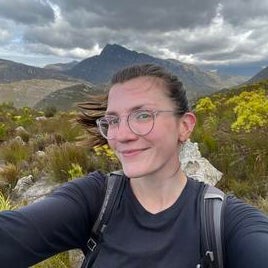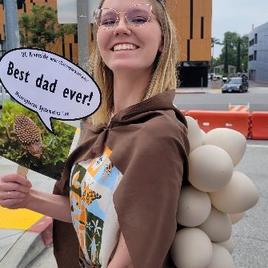Lab Leader

Christiane Weirauch
E-mail: christiane.weirauch(at)ucr.edu
Christiane joined the faculty in Entomology at UCR in early 2007 as a systematic entomologist. Her interest is in systematic research of Heteroptera, with an emphasis on Reduviidae, Miridae, and Dipsocoromorpha, on combining morphological and molecular data, and on integrating our systematic knowledge with the evolution of exciting character systems (such as glands), the evolution of prey capture strategies in Reduviidae, and biogeography.
Christiane received a “Diplom” in biology form Eberhard Karls Universitaet in Tuebingen (working on the assassin bug fauna of a small nature reserve in Southern Brazil) and obtained her PhD from Freie Universitaet Berlin studying systematics of Reduviidae. She then moved to New York and became a post doc in the PBI (Planetary Biodiversity Inventory) project on Plant Bugs, where she focused on systematics of the mirid subfamily Phylinae.
List of publications on Google Scholar.
Current Lab Members

M.C. Fox
E-mail: mfox017@ucr.edu
Fox joined the Heteropteran Systematics Lab as a PhD student in the fall of 2024. They first studied entomology at the University of Wisconsin-Madison taking a special interest in the taxonomy course offerings. After graduating, they worked at the Cornell University Insect Collection. Of the various roles Fox had in the collection, the curation of the Hemiptera collection was the most influential. Alongside curation, they developed a key to Miridae genera for New York state.
Now at UCR, Fox works on the mirid project, specifically focusing on Orthotylinae biogeography. They will be carrying out a taxonomic revision for a select genus in the orthotylines. Additional work includes uncovering the curiousities of ant-mimicking mirids.

Rochelle Hoey-Chamberlain
E-mail: rhoey001(at)ucr.edu
I am an Associate Specialist, working on a variety of projects including the Dipsocoromorpha, Reduvioid, and Miridae. I graduated from UCR with my Master's degree in Entomology December 2012. For my thesis work I studied the biology, ecology, and behavior of velvety tree ants, Liometopum spp. I joined the Heteroptera Systematics Lab at UCR May 2013. I assist with many different tasks, including: image management and processing (including SEM and confocal microscopy), dissection of specimens, specimen curation and loan management, molecular procedures, and specimen databasing.
I am currently working on a molecular phylogeny of Hypselosomatinae (Dipsocoromorpha:Schizopteridae) and have published taxonomic revisions of the New World Hypselosomatinae.
I also have taxonomic experience with ants and attended The Ant Course organized by the California Academy of Sciences and the Museum of Comparative Zoology. I also have experience in insect pest control and worked for 4 years studying control tactics and pesticide efficacy on carpenter ants.
My CV can be viewed here.

Sarah Schroeder
I joined the Heteropteran Systematics Lab at UCR in July of 2022 as a PhD student. Before moving to California, I completed my undergrad at Concordia College in Moorhead, Minnesota. Throughout my time in college, I was involved with many projects in different areas of the natural sciences and found my home in Concordia’s natural history museum where I curated their insect collection. After graduation, I spent a year working as a research assistant in an entomology lab at North Dakota State University focusing on integrated pest management and biological control. I also had the opportunity to assist in curation of the North Dakota State Insect Reference Collection housed at NDSU. These experiences sparked my love for insect systematics and I was drawn to the work being done in the True Bug Lab. During my time at UCR, I will be studying the evolutionary history and biodiversity of Miridae in the California Floristic Province.

Veronica Tyts
E-mail: vtyts001@ucr.edu
I joined the lab in the fall of 2023 as a PhD student. Prior to that, I got my Bachelor's and Master’s degrees at St Petersburg State University, Russia, and my research for all of them focused on Miridae, or plant bugs, the largest family of true bugs, the diversity of which fascinated me. For my Bachelor's degree, I collaborated with New Zealand and Bruneian colleagues on reconstruction of the Rhinocylapus-complex (Miridae) phylogeny and description of a new genus. My Master’s project aimed to reconstruct a total evidence phylogeny of the mirid tribe Halticini. Outside of my theses, I also participated in several funded projects on climatic niche modeling and species delimitation of mirids.
Here at UCR, I will focus on reconstructing the phylogeny of the largest plant bug subfamily Mirinae (Heteroptera: Miridae) based on molecular data (markers and UCE loci) for my first chapter. For the second one, I will study the biogeographic origin of three mirid groups (genera Irbisia and Megalopsallus, Phymatopsallus group) in the California Floristic Province and the Nearctic region and trace host plant evolution in them. The phylogenetic reconstruction of the tribe Dicyphini (Miridae: Bryocorinae) based on UCE data will be the aim of my third chapter.
My CV can be viewed here.
